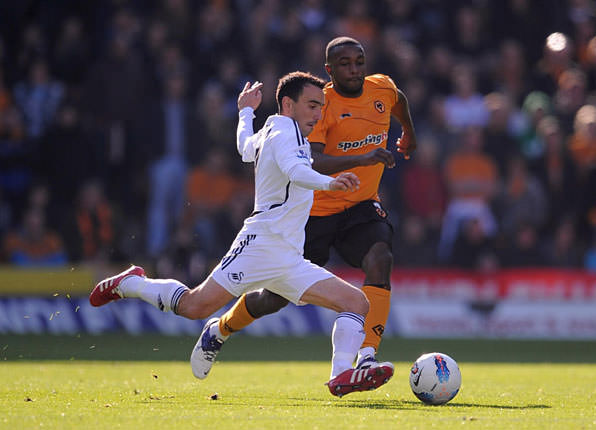Pass completion statistics are fast becoming a popular measure of player evaluation, no doubt aided by the fact that Barcelona have set a benchmark at the top of club football.
Like all statistics though, and perhaps even more so for passing data, more context is required, particularly when you note thatLeon Britton has trumped Xavi in the pass completion stakes so far this season. However, looking at the other numbers it’s clear to see why Xavi is a Champions League and World Cup winner, and why Leon Britton is not.
I’m particularly interested in passing efficiency in the final third; an area of the pitch that you’d think requires tremendous ability to be successful. But first, I’ve attempted to find some correlations in Premier League passing data this season.
It’s important to bear in mind none of these can be attributed as causal effects, but nevertheless:
- Both higher pass completion and a greater number of successful passes are significantly correlated with winning.
- Both higher pass completion in the final third and a greater number of successful passes in this area are also correlated with winning.
- A greater number of final third entries is uncorrelated with winning.
- Making a greater proportion of your passes in the final third is uncorrelated with winning.
The problem with the significant correlations is that passing success and winning can be a self-perpetuating cycle; teams that pass better may be more inclined to score, but scoring can also give teams confidence to pass it better. Thus we cannot definitively say that better pass completion increases your chances of winning.
To identify whether passing success really leads to success in results, we’d need to break down the data to see if successful passing is correlated with scoring the next (and particularly first) goal in a match.
Without this separation, I’ve just looked at general trends in passing so far this season. First, as you’d expect, teams with better pass completions across the entire pitch tend to have better pass completions in the final third too.
Teams below the line of best fit pass worse in the final third than you’d expect, and teams above the line pass better in the final third. Two notable teams, therefore, are Blackburn and Swansea, who somewhat underachieve when trying to pass the ball in the final third. The chart suggests that much of Swansea’s passing success is biased by passes completed in easier areas of the pitch. Blackburn, meanwhile, are only better than Stoke when it comes to completing passes in the final third.
Swansea’s style of play is a recurring theme in passing analysis this season, the Welsh team have grown into the division after a cautious passing display on the opening day at Man City. That match was typified by an inability to get the ball into dangerous areas, and whilst they have improved, the vast majority of their time on the ball is spent in parts of the pitch that will not trouble the opposition.
That’s not to say it’s a bad thing, clearly good pass completion in the defensive two-thirds of the pitch will tire opposition players, opening up opportunities later in the game. It’s interesting that two sides that have had frustrating seasons – Merseyside clubs Liverpool and Everton – have completed a number of their passes in attacking areas. Clearly there’s been plenty of probing football, and opposition teams have been happy to accommodate this.
This is supported by the number of successful final third passes it takes the two clubs to score a goal; more than twice as many as the most efficient team, Blackburn.
Blackburn complete so few passes in the final third, that when they can put a few together they have proved effective, perhaps indicative of teams pushing forward against Steve Kean’s side.
The league’s top two teams have been equally efficient. This is impressive; we’d expect teams would make it hard for the Manchester clubs to score, and even if they have, City and United been ruthless in the final third, needing fewer than 50 successful passes on average before scoring.
They have also been two of the most efficient teams defensively, and as ever, defensive success is better correlated with good results than attacking ability. Arsenal’s problems off the ball do not appear to have improved on last season, whilst Swansea can be pleased that even though they often out-pass the opposition, they aren’t vulnerable without the ball in dangerous areas. Other than Sunderland, the top six teams on the chart above haven’t had to ‘absorb’ pressure as much during games, which may help them appear more efficient defensively.
There are a long of strong relationships between passing across the entire pitch and passing in the final third, but focusing on the attacking and defensive thirds of the field help gives context and perspective to some teams’ numbers.
This post is also available on 5 Added Minutes.
All of the Opta stats used in this article are from our EPLIndex Stats Centre. Subscribe now for Access and write your own article on EPLIndex.com!





